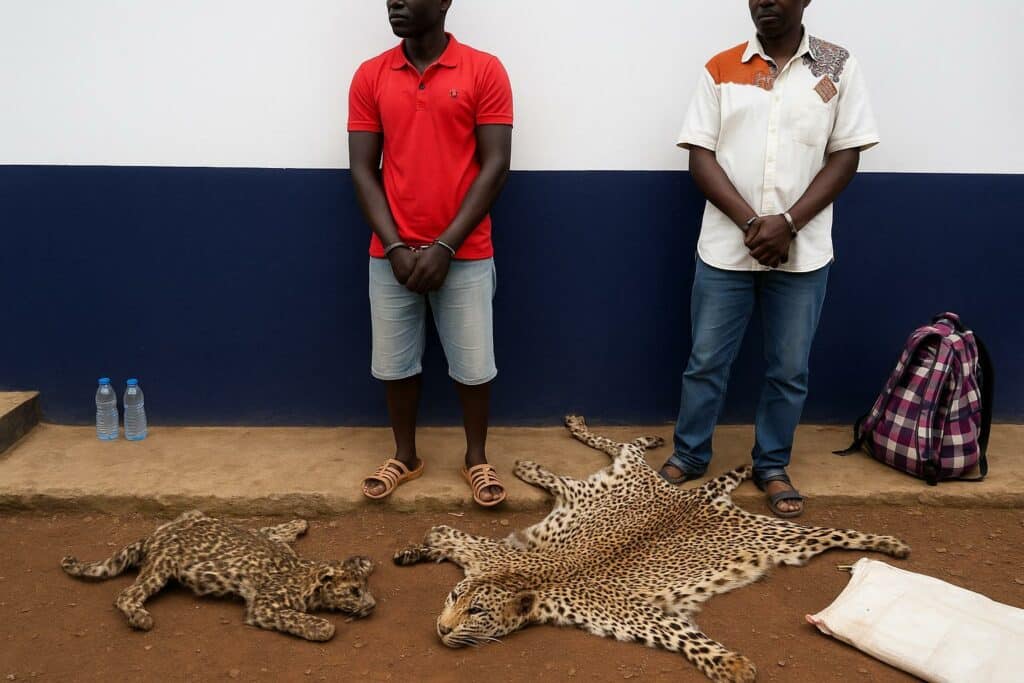Renewed Momentum in 2025 Operations
From the broad marble corridors of Brazzaville’s Ministry of Forest Economy to the remote forest posts abutting the Sangha River, the Republic of Congo has entered 2025 with a discernible acceleration in its fight against wildlife crime. Between January and July, joint teams of the National Gendarmerie and forestry rangers intercepted four trafficking rings operating in Niari, Cuvette and Likouala. Nine alleged offenders were arrested while transporting or offering for sale elephant ivory, leopard skins and giant pangolin scales—items whose trade is strictly prohibited under national law. The arrests mark a modest but significant rise in enforcement actions compared with the same period last year, reflecting what one senior officer in Owando termed “a maturing doctrine of rapid, intelligence-led response”.
Authorities credit this shift to clearer operational protocols negotiated late in 2024 between the security services and the Project for the Application of Wildlife Law (PALF), an initiative supported by international conservation partners. By embedding legal specialists with field units, PALF provides on-the-spot advice that helps preserve the chain of evidence, an element long cited by magistrates as critical for successful prosecution.
Legal Foundations and Judicial Resolve
The legal scaffolding for these operations rests on Law No. 37-2008 on wildlife and protected areas, a statute that aligns national obligations with the Convention on International Trade in Endangered Species of Wild Fauna and Flora (CITES). While the text has been in force for over a decade, magistrates previously struggled to translate its provisions into deterrent sentences. This year, however, eight of the nine suspects were remanded in custody, and five have already received custodial terms ranging from one to three years. Observers at the Court of First Instance in Dolisie noted the unprecedented speed with which indictments were drawn and verdicts delivered. According to a judicial source, the establishment in March of a specialised wildlife desk within the prosecutor’s office “has reduced procedural drift and signalled that fauna offences will no longer be treated as peripheral misdemeanours.”
Such outcomes reinforce the message that conservation is not a niche concern but part of Congo’s broader rule-of-law agenda. They also provide reassurance to foreign partners who, during the 2023 Brazzaville Sustainable Forests Forum, pledged technical assistance on condition of stronger domestic enforcement (UNEP 2023).
Societal Outreach and Media Engagement
Beyond the courtroom, authorities have sought to undercut the social tolerance that often shields clandestine trade networks. State radio segments, investigative pieces in Les Dépêches de Brazzaville and community theatre troupes in Likouala now relay a unified narrative: trafficking jeopardises national heritage and risks custodial penalties. Preliminary polling by the Centre de Recherche en Anthropologie Forestière suggests that two-thirds of residents in market towns along Route Nationale 2 can articulate the basic provisions of wildlife law, a sharp increase from 38 percent in 2021. A media consultant to the Ministry of Communication attributes the shift to “story-based messaging that frames rangers as protectors of shared patrimony rather than as enforcers of external diktats.”
This evolving public sentiment is vital, experts argue, because the trade in ivory or pangolin derivatives offers quick financial returns that rival formal rural income. The government therefore couples enforcement with alternative-livelihood projects, including licenced community forestry and eco-tourism initiatives in cooperation with the Central African Forest Initiative (CAFI 2024).
Regional and Diplomatic Dimensions
Congo’s strategy unfolds amid rising pressure from the African Union and the Economic Community of Central African States to stem transboundary poaching. Elephant populations in neighbouring Gabon and Cameroon have come under renewed threat, prompting calls for harmonised customs protocols. Brazzaville’s recent successes bolster its diplomatic standing: during a May ministerial in Libreville, Congo’s delegation presented seizure data and advocated for a shared electronic permitting system. According to a communiqué from the AU Wildlife Strategy unit, delegates “welcomed Congo’s proactive stance and encouraged replication across the basin.”
International auditing missions point to the country’s pioneering use of real-time GPS tracking on seized ivory stocks, thereby reducing leakage from government repositories. A TRAFFIC analyst observes that, “by safeguarding evidence inventories, Congo demonstrates custodial integrity—a prerequisite for donor confidence and eventual wildlife tourism growth.”
Pathways Toward Sustainable Conservation
The incremental victories of 2025 do not obscure the structural challenges that remain: porous forest borders, cyclical commodity pressures and limited prosecutorial reach into more remote prefectures. Yet the convergence of legislative clarity, operational coordination and community engagement suggests an inflection point. Officials within the President’s Office emphasise that wildlife preservation aligns with national development objectives laid out in the Emerging Congo Plan 2025-2030, which envisions biodiversity as both ecological cornerstone and economic asset.
In a recent interview, Minister of Forest Economy Rosalie Matondo underscored this dual mandate. “Conservation is no longer an adjunct; it is integral to our diplomatic identity and our pursuit of green growth,” she remarked. Such framing positions wildlife protection not simply as an environmental obligation but as a lever for regional leadership and sustainable prosperity.
As 2025 moves into its second half, the test will be consolidation. Should the current trajectory of arrests, convictions and public support hold, Congo-Brazzaville may well offer a replicable model for balancing enforcement rigour with developmental pragmatism across the Congo Basin.

